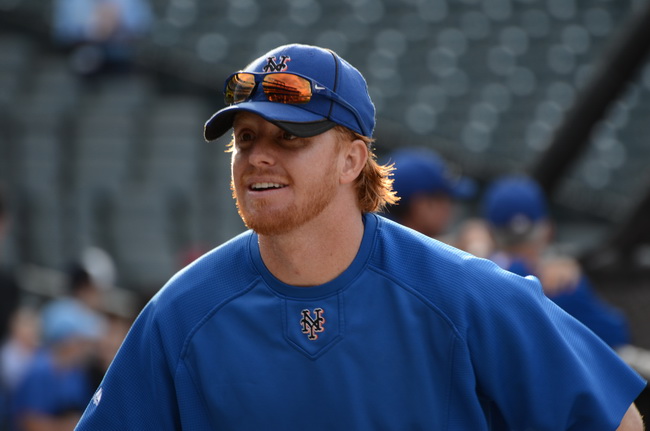
Earlier today, Don Mattingly made some waves when he said the following about the Dodgers’ second-base situation:
I like platoons because, basically, it gets you good matchups if you get the right guys for it. It keeps guys involved, keeps them fresh and they know when they will be starting. I actually like it, so definitely, no question.
It’s a bit worrying that the Dodgers still haven’t named Alex Guerrero as the opening day second baseman, but they’ve made a point to avoid doing so all winter. In theory, Mattingly is right, a platoon can increase the total offensive output at a position. Where was this attitude when the Dodgers had James Loney? And, more importantly, what would a potential platoon at second base even look like?
Before continuing, there’s one important thing to establish: Alex Guerrero shouldn’t be in a platoon at second base. The only reason for the Dodgers to turn to a platoon in the first place would be if Guerrero isn’t ready for major league games. After such a long layoff, he needs to play every day. If he isn’t, the Dodgers will be making a huge mistake. The same can be said of Erisbel Arruebarruena, whose contract isn’t even official yet.
Are there any obvious platoon options among the potential second basemen that Mike outlined in his second base preview? Below is a table of possible options, with their wRC+ against left-handed and right-handed pitching. A higher wRC+ is better, and a wRC+ of 100 is league average. I’m using each player’s career totals since platoon split statistics take a long time to stabilize.
| Player | wRC+ vs LHP | wRC+ vs RHP |
| Justin Turner | 82 | 100 |
| Dee Gordon | 43 | 86 |
| Chone Figgins | 84 | 100 |
| Brendan Harris | 92 | 82 |
Miguel Rojas minor leagues vs LHP: .229/.304/.264, vs RHP: .236/.298/.292
Justin Sellers minor leagues vs LHP: .353/.426/.660, vs RHP: .262/.337/.419
The only player on the major league list with a severe platoon split is Dee Gordon, which I didn’t realize until writing this post. So far in the majors (in a limited sample size of 204 plate appearances), Dee has hit only .221/.267/.232 against lefties. His minor league splits can provide some additional sample size; between 2011 and 2013, he hit .291/.357/.330 against lefties and .319/.385/.421 against right-handed pitching, according to the split data at Minor League Central. That’s not as severe as his major league numbers, but does verify the presence of a platoon issue.
If we take the best wRC+ from each side of the major league portion of the table, the “optimal” batting platoon would be pretty uninspiring: Brendan Harris against left-handed pitching, and Chone Figgins/Justin Turner against right-handed pitching. Harris hasn’t hit well since 2009 (and isn’t great on defense), and we all know about Figgins’ past. Turner has been league average against right-handed pitching and has less risk than Figgins, so he seems like the ideal option against right-handed pitching.
Since there’s no obvious platoon partner for Turner among the major league options, the search could be expanded to the Dodgers’ minor leaguers. Both Rojas and Sellers are known for their gloves and not for their bats, potentially allowing for them to make up for having lower hitting numbersr. Rojas is terrible against all pitchers, but Sellers is an interesting option since he hits lefties better. The raw values of his minor league statistics are nearly useless (since they’re from Albuquerque), and even if we use three years of split data, Sellers has only had 178 plate appearances against southpaws. The sample really isn’t large enough to definitively say that Sellers has a big platoon problem, but it still could be an advantage for the team to exploit.
If the Dodgers pick two players from the above list, there’s no clear-cut way to use platoon splits. Turner seems like the best option from both sides of the plate. If they want to limit Turner’s plate appearances, I’d probably use Sellers against left-handed pitchers (which shocks me as much as anybody). It seems pretty unlikely that the Dodgers would use Sellers in place of a veteran, so a sub-optimal arrangement of Turner and Figgins seems like the most likely platoon pairing. It probably isn’t worth worrying about too much, though, since the most likely scenario is that Guerrero is starting at second base on opening day.
—
This post uses the following statistics:
- wRC+: Weighted Runs Created Plus. Compares a player’s offensive output to the league average position player, and is neutralized for park and league. 100 wRC+ is an average offensive player, 110 wRC+ is 10% above average, etc. Explanation here.
 Dodgers Digest Los Angeles Dodgers Baseball Blog
Dodgers Digest Los Angeles Dodgers Baseball Blog